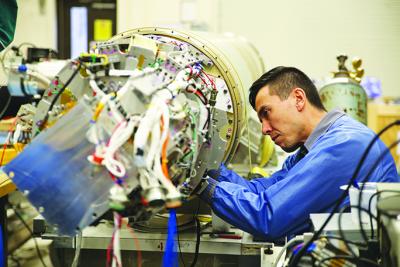Physical Sciences
NASA scientist to present Friedman Lecture in Astronomy on April 10, 2018

Image

Penn State to participate in consortium to demonstrate remote monitoring of nuclear reactors

Image

NASA set to launch Penn State led experiment

Image

Matthews receives 2018 Penn State Alumni Achievement Award

Image

Study of climate change could lead to understanding future of infectious disease
"How to Hunt for Signs of Alien Life," a free public lecture on February 24

Image

Squire Booker selected as Holder of the Eberly Distinguished Chair in Science

Image

Big black holes outpace their galaxies in growth

Image

"What makes a planet habitable?" is a free public lecture on February 17

Image

"The Birth of Habitable Planets" is a free public lecture on February 10

Image
